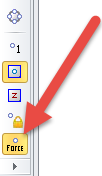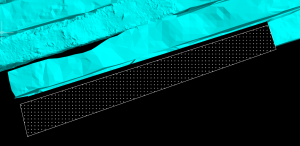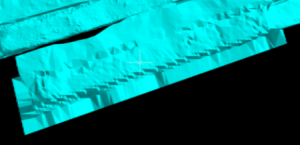Deswik.Suite 2016.1 – Staff picks
![]() Three months on since the release of Deswik.Suite 2016.1, we continue to explore some of the 2016.1 enhancements, with a selection of our team’s favorite new tools:
Three months on since the release of Deswik.Suite 2016.1, we continue to explore some of the 2016.1 enhancements, with a selection of our team’s favorite new tools:
THE DESWIK DRILLHOLE DATABASE
Deswik.CAD now provides an improved way of storing desurveyed borehole and drillhole figures along with their associated attributes – the Deswik Drillhole Database (DDD). Instead of importing boreholes directly into a CAD document, boreholes are now imported or desurveyed into a Deswik Drillhole Database from other packages (e.g. acQuire, Datamine or raw hole data stored in CSV / database tables). The boreholes are then selectively loaded onto a layer in one or more CAD documents using attribute and spatial filters.
This flexible approach means that you can now load multiple drillhole datasets, stored in different Deswik Drillhole Databases, into the same document and apply different display settings to each. The loaded boreholes will be associated with a layer in the CAD document which will also independently store the settings defining:
- the file location or connection settings of the referenced Deswik Drillhole Database
- the attribute and spatial based filters used when the drillholes were imported
- the hole display properties and annotation.
The DDD supports two underlying database formats, a standalone SQLite database (file based) or Deswik.MDM SQLServer database. Deswik.CAD provides more memory efficient, flexible and faster ways of loading the holes into the graphics than in previous versions.
Key benefits of using the Deswik Drillhole Database:
- The size of Deswik.CAD files is now significantly reduced as the holes are not stored in each CAD document, instead they are loaded from the Deswik Drillhole Databases as required.
- Loading a CAD document referencing drillholes is faster.
- Only the holes that need to be displayed in a project need to be loaded, i.e. attribute and spatial filters limit the number of holes loaded, not the number of holes displayed once they are all loaded.
- The holes are accessible to multiple CAD documents at the same time and not locked in a single Deswik.CAD document.
- As the holes are referenced, as soon as an addition is made to the drillhole database, these holes will automatically load into Deswik.CAD when the document is re-opened.
- Multiple drillhole databases can be referenced into the same Deswik.CAD document.
- There is no longer a separate drillhole attributes file associated with the Deswik.CAD project which would cause issues if lost.
- Drillholes in Deswik.CAD v2016.1 are displayed significantly faster.
PREDEFINED COMMAND LINE INPUT STRINGS
Albeit a small change, this enhancement makes drafting in Deswik.CAD much easier. You can now use predefined command line input strings in Deswik.CAD to digitize points at a specific coordinate location in the Model Space, or to digitize polylines of a specific length and azimuth. You can type the following commands to generate relative coordinates and absolute coordinates:
- @length<azimuth
- @length
- @relativex,relativey,relativez
- #absolutex,absolutey,absolutez
- @Wvalue changes the working plane to the elevation specified in value
FORCE SNAP TOOL
 “Force Snap” is a fairly handy new tool, which enforces snapping to an entity. You can use this tool when doing design work that requires to snap to points on existing entities. For example, there is a chance in these instances that you may click in the Model Space near a point which appears close, but in reality is not. If Force Snapping is turned off, you would snap to the working plane. If Force Snapping is turned on, a point will not be generated unless you actually snap to an entity.
“Force Snap” is a fairly handy new tool, which enforces snapping to an entity. You can use this tool when doing design work that requires to snap to points on existing entities. For example, there is a chance in these instances that you may click in the Model Space near a point which appears close, but in reality is not. If Force Snapping is turned off, you would snap to the working plane. If Force Snapping is turned on, a point will not be generated unless you actually snap to an entity.
MERGE POINT CLOUD DATA
This new feature in Deswik.CAD enables you to update your topography with new scan data without altering the initial surface outside the new data area even slightly. Some additional features are also in place to merge the new data with the old over a transition boundary.





